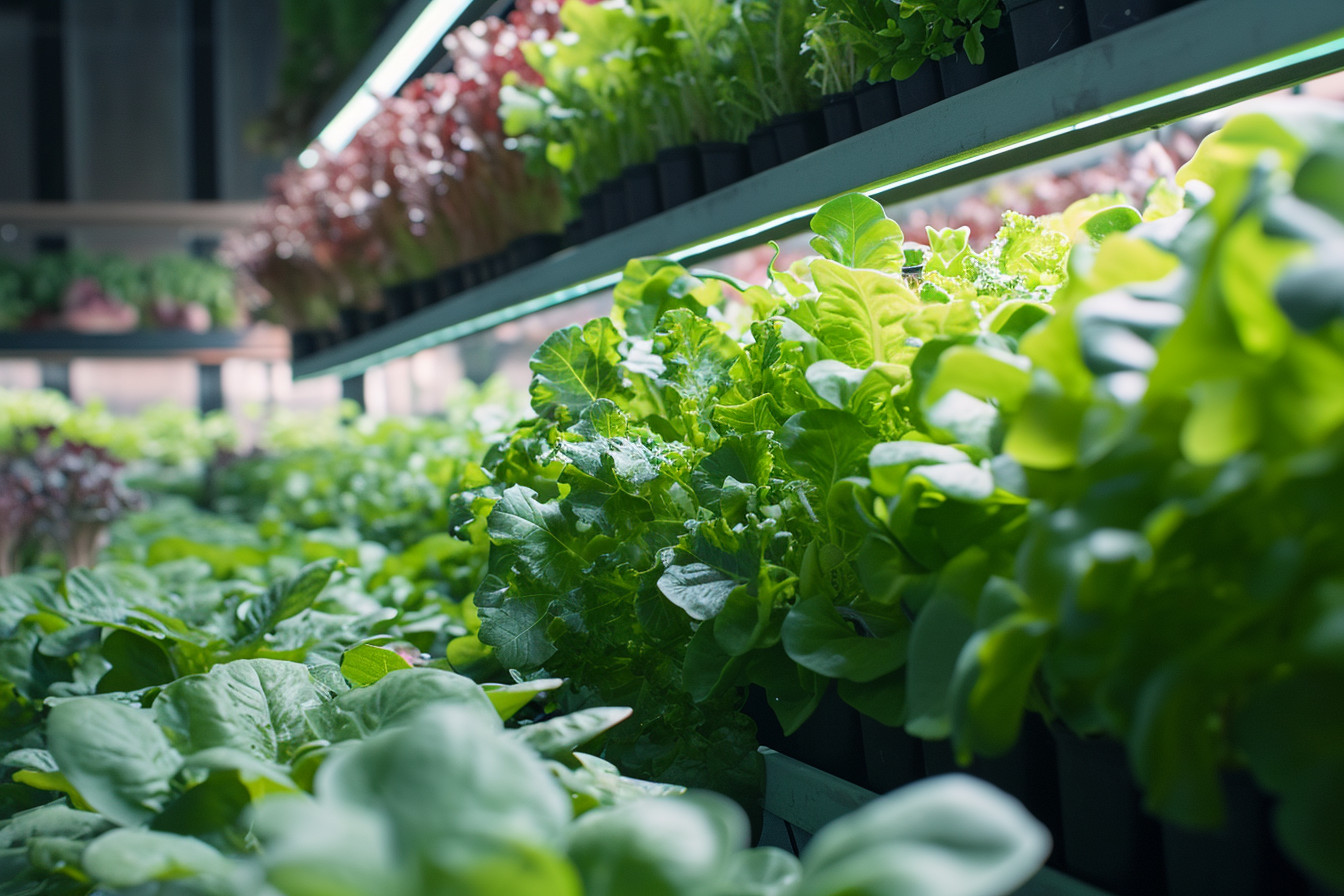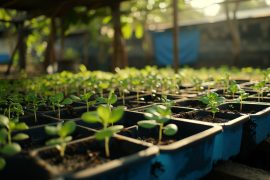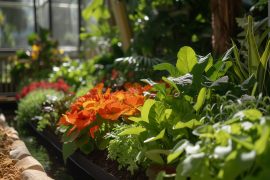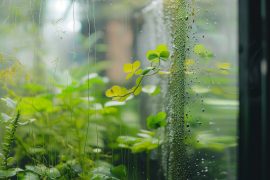I’ve always found something magical about the tranquility of gardening, the way it connects us to the earth and slows down the hustle of life. But what if I told you that same serene hobby could also pack a punch for your wallet? That’s the beauty of aquaponic gardening—it’s not just good for the soul; it’s great for the economy too.
You see, aquaponics is like hitting two birds with one stone: you grow plants and raise fish in a closed-loop system that’s as resourceful as it is fascinating. It’s a game-changer for those looking to shave off grocery bills or even turn a profit. And let’s not forget the educational goldmine it offers, teaching us about sustainable practices and the symbiosis of nature.
So, I dove in headfirst to explore how this modern twist on an ancient practice could revolutionize our approach to gardening and our bank accounts. Trust me, it’s a story worth sticking around for.
The Basics of Aquaponics
Sometimes I step into my garden and it feels like stepping into another world, a serene space where all the hustle fades away. Witnessing the intertwining lives of fish and plants in my aquaponic system is a glimpse into nature’s harmony – it’s a slice of tranquility.
Aquaponics is really the marriage of aquaculture (raising fish) and hydroponics (growing plants without soil). It’s like having a pet fish that helps you garden. In this system, fish and plants grow together in one integrated environment, each benefiting the other. The fish waste provides an organic food source for the plants, and the plants naturally filter the water for the fish. I like to think of it as an elegant dance between species, each step calculated and beneficial.
The setup involves several key components:
- Fish Tank: This is where your fish will live. The size can vary based on how many fish you want to raise.
- Grow Bed: The plants reside here, with their roots dipping into nutrient-rich water.
- Pump & Filtration: These keep the water moving and clean, ensuring both fish and plants stay healthy.
To make sense of aquaponics, let’s break down the process:
- Fish produce waste: They’re not just swimming around for fun; they’re actually creating the nutrients plants crave.
- Waste becomes fertilizer: With a bit of microbial magic, ammonia from waste is converted into nitrates, a form of nitrogen that plants gobble up.
- Plants purify water: As the plants absorb these nutrients, they simultaneously clean the water, which is then cycled back to the fish.
My aquaponic system doesn’t just save space by combining two disciplines. It’s also low maintenance. I spend less time watering, weeding, and fertilizing than I ever did with traditional gardening. The balance of the ecosystem does much of the work for me, which leaves more time for the peaceful contemplation of my green sanctuary.
If you’re worried about the technical side of things, don’t be. Aquaponics can be surprisingly simple. I’ve seen setups ranging from basic, with a single fish tank and a few plant pots, to the elaborate, with multiple tanks and large grow beds. You tailor it to your space and your comfort level.
Economic Savings from Aquaponic Gardening
Every time I kneel in my aquaponic garden, it strikes me that I’m not just cultivating plants; I’m also harvesting savings. Now, I’m eager to share how these serene green spaces double as a boon to our wallets. Imagine the tranquility of your garden with the gentle hum of water flow, all the while knowing it’s saving you money — it’s a soothing thought, isn’t it?
Diving into aquaponic gardening was a learning curve, but I’ve come to realize that it’s more than just a harmonious blend of fish and flora. It’s an ingenious cost-cutter too. For instance, let’s consider water usage. Unlike traditional gardening, aquaponics is massively water-efficient, recirculating the same water within the system. My typical water bill has experienced a dramatic dip since the switch, with aquaponics using up to 90% less water than conventional soil gardening. Serene and sustainable? Count me in.
| Water Usage Comparison | Traditional Gardening | Aquaponic Gardening |
|---|---|---|
| Percent of Water Used | 100% | 10% |
Fertilizer – that’s another kicker when it comes to garden economics. But here’s the beautiful part: in an aquaponic system, the valuable waste from fish provides a nutrient-packed meal for your plants. Yes, zero need for store-bought fertilizers. Just thinking about how the natural waste is converted into lush greenery, without spending a dime on chemicals, adds to the peaceful allure of these gardens.
- No Fertilizer Costs
- Natural Fish Waste Nutrients
Then there’s the yield. Traditional gardens are at the mercy of seasons, but my aquaponics setup allows for year-round growing. This means continuous produce and, you’ve guessed it, constant savings. Let me paint a picture for you: home-grown tomatoes in winter, fresh basil in fall – it’s a personal produce aisle without the price tag. The efficiency of aquaponics also translates into faster growth rates for plants, which means I’m harvesting more frequently than I did with my old soil garden.
| Plant Growth Rate | Traditional Gardening | Aquaponic Gardening |
|---|---|---|
| Harvest Frequency | Seasonal | Year-Round |
Reducing Grocery Bills
One of the biggest drags on my wallet used to be the weekly trip to the grocery store. I’d sigh every time I bought those bags of salad greens or that pricey organic basil. But that’s before I turned a new leaf, quite literally, with aquaponic gardening.
I’ll admit, at first I was skeptical. Could a tank of fish and some floating lettuce really make a dent in my grocery bill? The answer came within just a few months of harvesting my own produce. Let me break it down for you.
The Cost of Fresh
Buying fresh produce is great for my health but tough on my finances, especially when I opt for organic. Let’s face it, those price tags can sting. So I started a little experiment. I compared the cost of my store-bought veggies to what I was growing aquaponically. The results were eye-opening.
Here’s a quick rundown:
| Item | Store-Bought Price | Aquaponic Savings |
|---|---|---|
| Salad Greens | $3 per bunch | Nearly $3 (as I harvest multiple times) |
| Tomatoes | $4 per lb | Around $4 (homegrown taste better too!) |
| Herbs | $2 per small packet | Easily $2 (and mine are always fresh) |
Now these figures might seem small on a weekly basis, but over the year, they add up. Plus, there’s no beating the flavor of veggies that go from water to plate in minutes.
The Convenience Factor
I’ve also noticed an unexpected perk—streamlined meal planning. I used to plan my meals around what was on sale or what I remembered to buy. Now, I just take a step out back and see what’s ripe for the picking. Basil for my pesto? Check. Tomatoes for my salad? Got ‘em. It’s my very own green grocer, no more than a few feet away. Isn’t that something?
Personal Savings Experiences
Aquaponics isn’t just about saving some cash though. It’s about finding peace in my own backyard, a tranquil escape from the buzz of the world. I’m crafting my own salads, watching fish leisurely swim by, all the while knowing I’m cutting down on my expenses.
Profit Potential
Starting an aquaponic garden isn’t just a tranquil hobby; it’s also got some serious money-making potential, especially when I look into the long term. By growing both fish and plants, I’ve realized the value is twofold. Aquaponic systems can turn a profit through the sale of organic produce and aquarium fish, which are both in high demand.
I remember reading up on successful aquaponic farmers who’ve turned their small backyard setups into thriving businesses. They started simply by supplying local markets and neighbors with fresh produce. Over time, many have expanded, forming CSAs (Community Supported Agriculture), and even supplying produce to more upscale restaurants hungry for the freshest ingredients. With the right scale, knowledge, and market, there’s solid evidence that aquaponics can evolve from a money-saving technique to a profitable enterprise.
Here’s a look at some of the profit margins I’ve researched for home-based aquaponic systems:
| Item | Cost to Produce | Market Price |
|---|---|---|
| Organic lettuce | $0.50/head | $3.00/head |
| Heirloom tomatoes | $0.75/pound | $4.00/pound |
| Tilapia | $1.50/pound | $6.00/pound |
While these numbers might make you sit up and take notice, they are just one piece of the puzzle. Alongside potential sales, there’s the aspect of diversifying income streams. For example, aquaponic gardeners might also offer educational workshops, sell system plans or kits, and consult on building and maintaining personalized systems.
I’ve personally found that there’s a ton of satisfaction in knowing I’m not just growing food; I’m cultivating knowledge and skills that are valued by the community. Word of mouth spreads quickly, and before I knew it, folks were asking me for advice on starting their own gardens. It wasn’t long before I was handing out business cards alongside my baskets of crisp, leafy greens.
Key Advantages: Sustainability and Education
As I delve into the world of aquaponics, I can’t help but marvel at its inherently sustainable nature. Imagine a system where fish and plants coexist in beneficial harmony. The fish produce nutrients for the plants, and the plants clean the water for the fish. It’s a closed-loop ecosystem right in your backyard, folks. That means no waste and minimal water usage.
Here’s a peaceful thought: while I’m tending to my garden, there’s this tranquil vibe, knowing I’m engaging in an age-old ritual, but with a modern, eco-friendly twist. There’s no denying the satisfaction I get from nurturing this little slice of nature that’s as good for the Earth as it is for my soul.
Let’s talk education because aquaponic gardening isn’t just about growing food; it’s a learning opportunity that’s endless. As I’ve interacted with these systems, I’ve gained a wealth of knowledge about plant and fish species, water chemistry, and the nitty-gritty of ecosystem dynamics. And the cool thing is, this info isn’t just for me. I’ve shared what I’ve learned with neighbors, friends, and local schools. Educational workshops have become a regular thing in my garden, sparking interest in sustainable living in folks of all ages.
For those who find traditional gardening terms like “nitrogen cycle” or “pH balance” intimidating, aquaponic systems are where it all clicks. It’s one thing to read about these concepts in a book; it’s another to see them in action as you interact with the living parts of an aquaponic system. It’s gratifying to help demystify these technicalities for others, making the subject matter accessible and engaging.
One of my favorite examples to share is the story of my first successful aquaponic harvest. I remember it like it was yesterday—pulling up those crisp lettuce heads, lush and alive. Friends who’d been following my aquaponic journey celebrated this milestone with me, and it became more than just about yielding crops; it was about the journey we’d taken to reach that point, together.
Final Thought
So there you have it. I’ve seen firsthand how aquaponic gardening can be a game-changer for your wallet and your well-being. Not only have I saved a bundle on groceries, but I’ve also tapped into the joy of growing my own food. It’s not just about the savings though; it’s about the potential to earn. Turning a passion into profit by selling fresh, organic goods or sharing knowledge feels incredibly rewarding. Plus, knowing I’m doing my part for the environment by conserving water and reducing waste adds an extra layer of satisfaction. And let’s not forget the sense of community and connection that comes from sharing this sustainable practice. Trust me, there’s nothing quite like the pride that blooms from that first successful harvest. It’s clear—embracing aquaponic gardening is a win on so many levels.








